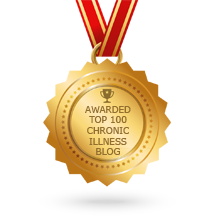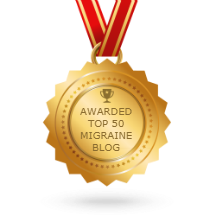NorbRELIEF Green Light Review
 |
Background
If you've been on social media recently, you may have seen the rise of green light therapy for pain relief. While it may seem new in the migraine world, the effects of green light therapy are well-documented. According to Dr. Bing Liao, a neurologist at Houston Methodist Hospital, green light can change the level of serotonin and alter the endogenous opioid system, a pain-relieving system, throughout the central and peripheral nervous system, gastrointestinal tract, and immune system.
In a study from the University of Arizona, green light exposure reduced the number of headache days per month by an average of 60%, with a majority of the study participants reporting more than 50% reductions in headache days per month. Participants found that green light exposure resulted in a 60% reduction in pain. Using a scale to rate pain from 0 to 10, green light therapy reduced pain levels from an 8 to a 3.2. Green light therapy was also reported to shorten the duration of headaches and improve quality of life for participants with migraine.
NorbRELIEF
Norb was kind enough to send me their NorbRELIEF green light bulb for free in exchange for my honest review of it, and I've been using it for a month and a half. Norb has a patent-pending for its narrowband green light bulb, which also is designed to not have a flicker. On its website, Norb states that NorbRELIEF if for ambient lighting, as a way to illuminate your space.
 |
| Diagram from Norb's website detailing how the bulb differs from regular or green-coated light bulbs |
As seen in the picture above, NorbRELIEF differs from regular lightbulbs and even other green-coated light bulbs. Using a green-coated light bulb still lets red, white, blue, and yellow light come through, which can contribute to photosensitivity during migraine attacks. Narrow band green light is less likely to trigger migraine attacks, and the low-intensity narrow band green light can help soothe or reduce the severity of headache and migraine pain.
My Review
At first, I was slightly skeptical that green light could help my migraine attacks, especially since I do have frequent photosensitivity during attacks. However, I was pleasantly surprised with the NorbRelief light and its effects. The green is pleasant to look at and creates a great glow in my room. I didn't feel light-sensitive when looking at it, even with a mild attack.
About three weeks in, I was having one of the worst migraine attacks I've had in a while. I was at 9/10 pain, extremely nauseous, and absolutely miserable. I switched on my Norb green light and turned over in bed, waiting for my meds to kick in. Within around 10 minutes of the light being on, my nausea started decreasing. My pain levels were still high, but I was able to not be in complete darkness. Over the course of the next couple of hours, with the green light on, my pain levels came down and I was actually able to eat dinner! I was very surprised that the green light would work so well, especially in conjunction with my medications.
Over the past month and a half, my Norb green light has been a great tool for me. Even when I'm working and feeling some pain, I'll switch it on and it'll help slightly lower pain levels and my nausea, and help with my eye fatigue. Furthermore, at $19.99, this green light bulb is a great and inexpensive addition to my migraine toolbox. It even just looks cool too!
 |
| Nutmeg looking adorable in my room with the green light on! |
My green light is next to my bed, and my only issue is that I wish my lamp had a dimmer on it. While the light does not hurt my eyes, there are some times that I wish I could dim it slightly, so I would highly recommend using a lamp with a dimmer for optimal use.
Another hilarious realization is that after turning off the NorbRELIEF light and walking into normal light, everything looks purple! Norb notes on its website that purple is the opposite color of green for the human visual system. Human retinas contain red, blue, and green photoreceptors, which become saturated by the green of the light, so momentarily the red and blue cones are able to activate after the pigments are recycled by the green photoreceptor cones. This will usually take 30 seconds to a couple of minutes to get back to normal. It still is a fun perk to emerge from my room after an attack subsides and have everything look purple.
Overall, I highly recommend NorbRELIEF as a tool for people living with migraine as an inexpensive, drug-free addition to their migraine toolkit for acute attacks and daily life. For any people living with migraine, NorbRELIEF is a great way to test out the benefits of green light therapy without breaking the bank. In addition to migraine, Norb also can work for other pain conditions like fibromyalgia and other forms of neuropathy. I love that the green light allows me to not be in complete darkness while having an attack. It provides some additional freedom to still read, be in my room, or just relax with a cool green light!
You can buy a NorbRELIEF green light on their website here for $19.99. Use code SUPPORT10 for a 10% discount!
*I do not make any profit from any purchases made from this review. This is my honest opinion of the NorbRELIEF light bulb in exchange for trying the product.








